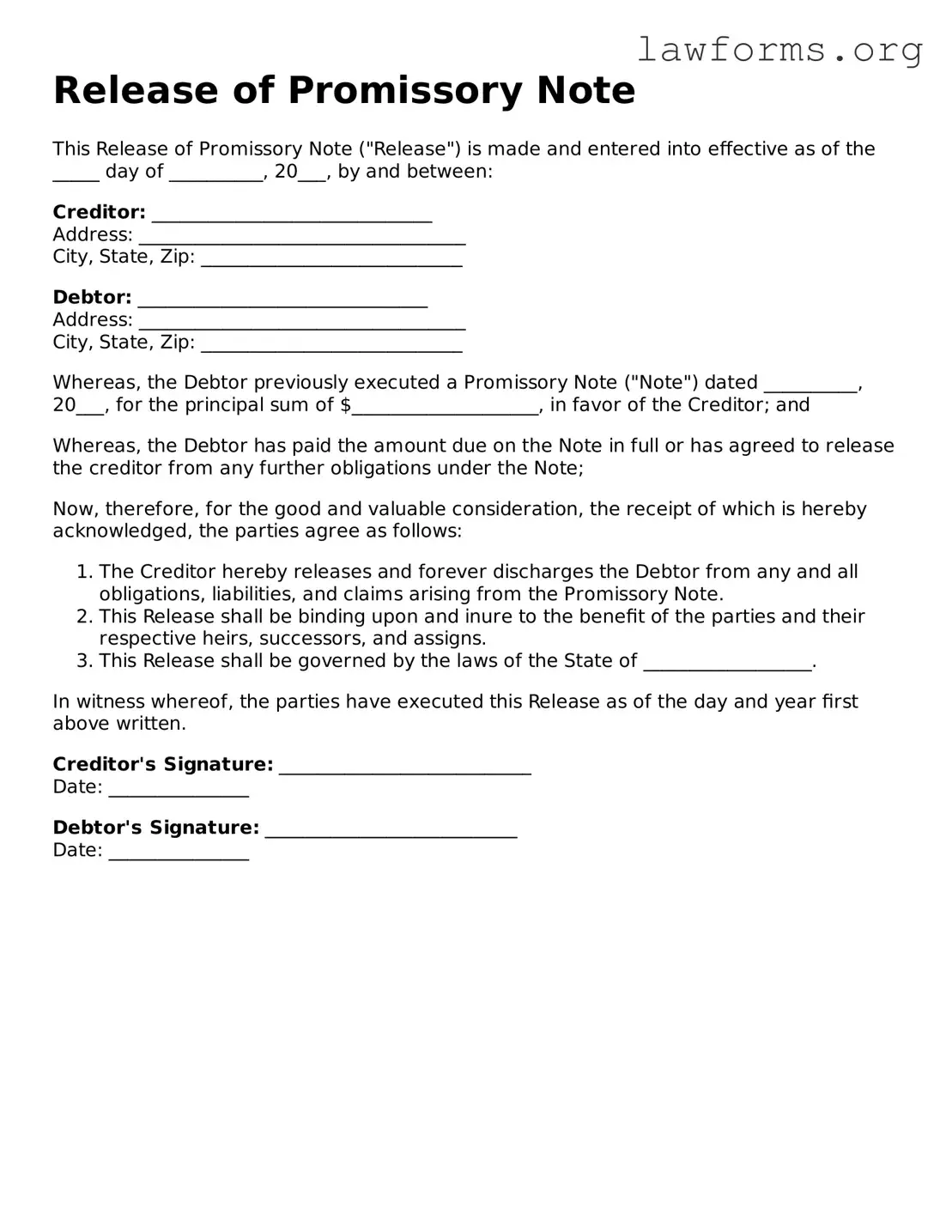Release of Promissory Note
This Release of Promissory Note ("Release") is made and entered into effective as of the _____ day of __________, 20___, by and between:
Creditor: ______________________________
Address: ___________________________________
City, State, Zip: ____________________________
Debtor: _______________________________
Address: ___________________________________
City, State, Zip: ____________________________
Whereas, the Debtor previously executed a Promissory Note ("Note") dated __________, 20___, for the principal sum of $____________________, in favor of the Creditor; and
Whereas, the Debtor has paid the amount due on the Note in full or has agreed to release the creditor from any further obligations under the Note;
Now, therefore, for the good and valuable consideration, the receipt of which is hereby acknowledged, the parties agree as follows:
- The Creditor hereby releases and forever discharges the Debtor from any and all obligations, liabilities, and claims arising from the Promissory Note.
- This Release shall be binding upon and inure to the benefit of the parties and their respective heirs, successors, and assigns.
- This Release shall be governed by the laws of the State of __________________.
In witness whereof, the parties have executed this Release as of the day and year first above written.
Creditor's Signature: ___________________________
Date: _______________
Debtor's Signature: ___________________________
Date: _______________
